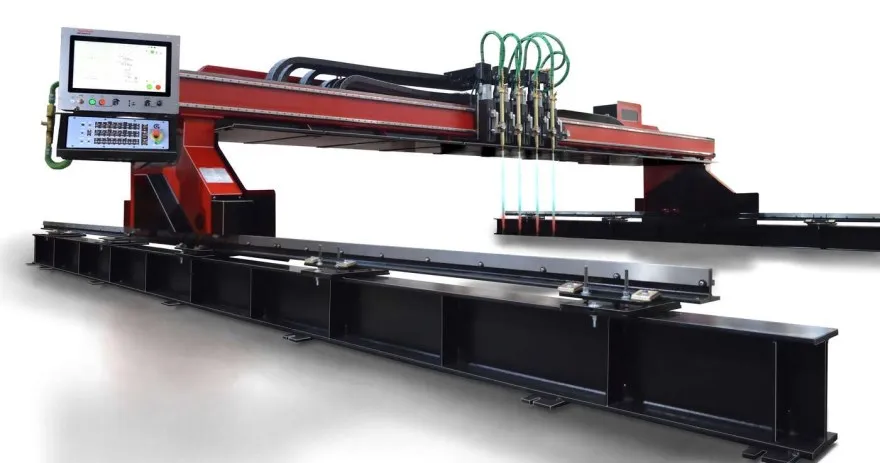Selecting the appropriate material is crucial for achieving efficiency and precise cuts with plasma cutting.
Choose the Right Plasma Cutter
When choosing the right plasma cutter, there are several factors to consider. When determining the intended use, you must ask yourself if you plan to use it for light-duty projects or heavy-duty industrial applications to help you determine the power and amperage requirements of the plasma cutter. Additionally, consider the cutting capacity and thickness capabilities of the plasma cutter. Different models have varying maximum cutting capacities, so choose the one that aligns with your project needs.
Choose the Right Material
Thickness
Different materials have varying thickness capabilities for plasma cutting. Thinner materials, such as sheet metal, can be easily cut with lower amperage settings, while thicker materials may require high amperage for effective cutting.
Conductivity
The conductivity of the material can impact the quality of the plasma cut. Metals with higher conductivity, such as aluminum and copper, tend to produce cleaner cuts with less dross (residue) than materials with lower conductivity. Consider the conductivity to ensure the desired cut quality and minimize post-cutting cleanup.
Compatibility
Not all materials are suitable for plasma cutting. For example, some materials like PVC or certain plastics can release toxic fumes when subjected to high temperatures, making them unsuitable for plasma cutting. Always consult material specifications and safety guidelines before proceeding.
Familiarize Yourself with the Machine
Read the owner’s manual thoroughly before proceeding with your project; this will benefit you in minimizing risks and increasing efficiency.
Optimize Cut Settings
Fine-tuning the cut settings can significantly improve material efficiency. Adjust the amperage, gas pressure, and cutting speed to achieve clean and precise cuts while minimizing material waste.
Plan Your Cuts Strategically
When aiming for efficient materials used in plasma-cutting projects, it is essential to plan your cuts strategically. Take the time to analyze your design and identify the most effective cutting paths, considering factors such as material size, shape, and available space. By strategically arranging your cutting patterns, you can significantly reduce material waste and optimize the utilization of your material. This approach helps minimize the number of cuts required and maximize the use of each sheet or piece, ultimately saving you time and money. Consider nesting your parts efficiently as well. Nesting involves arranging your design in a way that minimizes the gaps between parts, allowing you to fit more components onto a single sheet of material and reducing waste even further.
Use Templates and Jigs
Utilizing templates and jigs is a highly effective technique for ensuring efficient materials use in plasma-cutting projects. Templates, which are pre-cut patterns made from sturdy materials like metal or wood, provide precise guides for consistent and accurate cuts.
By using templates, you can replicate shapes and sizes with ease, eliminating the need for repeated measurements and reducing the risk of errors. Similarly, employing jugs, which are fixtures or guides that hold the material in place during cutting, helps maintain stability and enhance the accuracy of your cuts. Templates and jigs not only improve efficiency but also enable better material utilization, as they allow you to position your designs strategically on the workpiece, minimizing waste and maximizing the number of usable parts.
Maintain Your Equipment
Proper equipment maintenance is crucial for achieving efficient materials use in plasma cutting projects. Regularly inspecting and servicing your plasma cutter, along with its associated tools and accessories, is key to ensuring optimal performance and minimizing material loss.
Keep your cutting equipment clean and free of debris, as any buildup can affect the quality of your cuts and lead to material waste. Additionally, regularly check and replace consumables such as nozzles and electrodes to maintain precise cutting capabilities and minimize unnecessary material removal. Follow the manufacturer’s guidelines for maintenance and calibration, as well as any recommended preventive measures. By keeping your equipment in top condition, you can achieve consistent, high-quality cuts while maximizing the efficiency of your material usage.
Contact Us
Every industrial CNC machine from Cutting Systems delivers the cut quality, productivity and precision that your application demands. We consider all of our customers to be valued partners and provide unparalleled service to ensure your needs are met. If you have any questions about our steel cutting machinery, feel free to contact us – we’re always happy to help. If you know what you need for your industry, try requesting a quote to begin building the CNC machine that will get the job done right every time.
